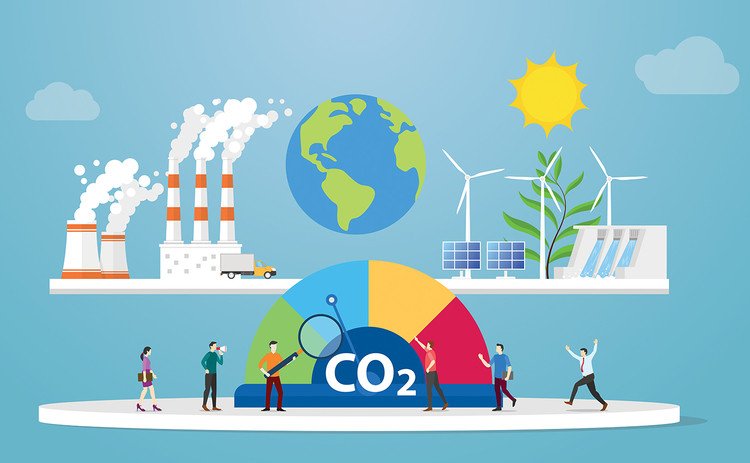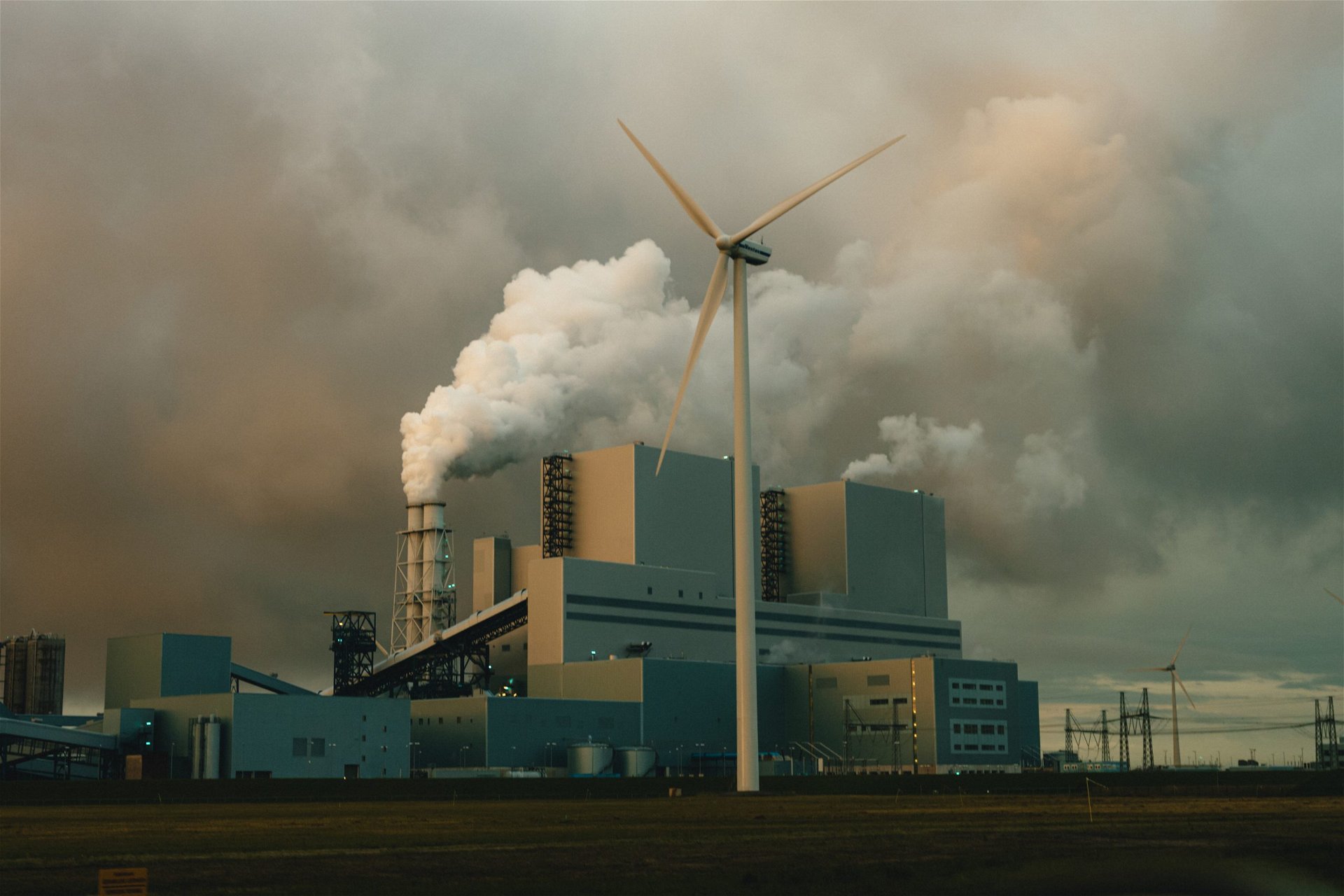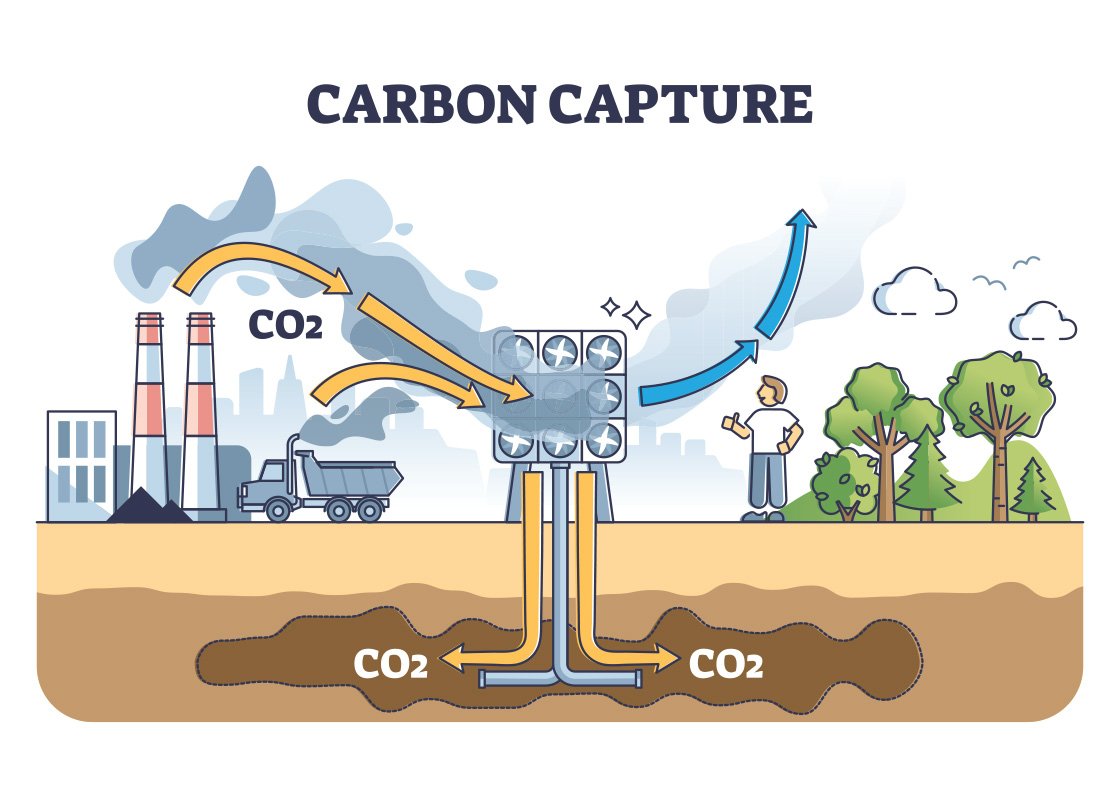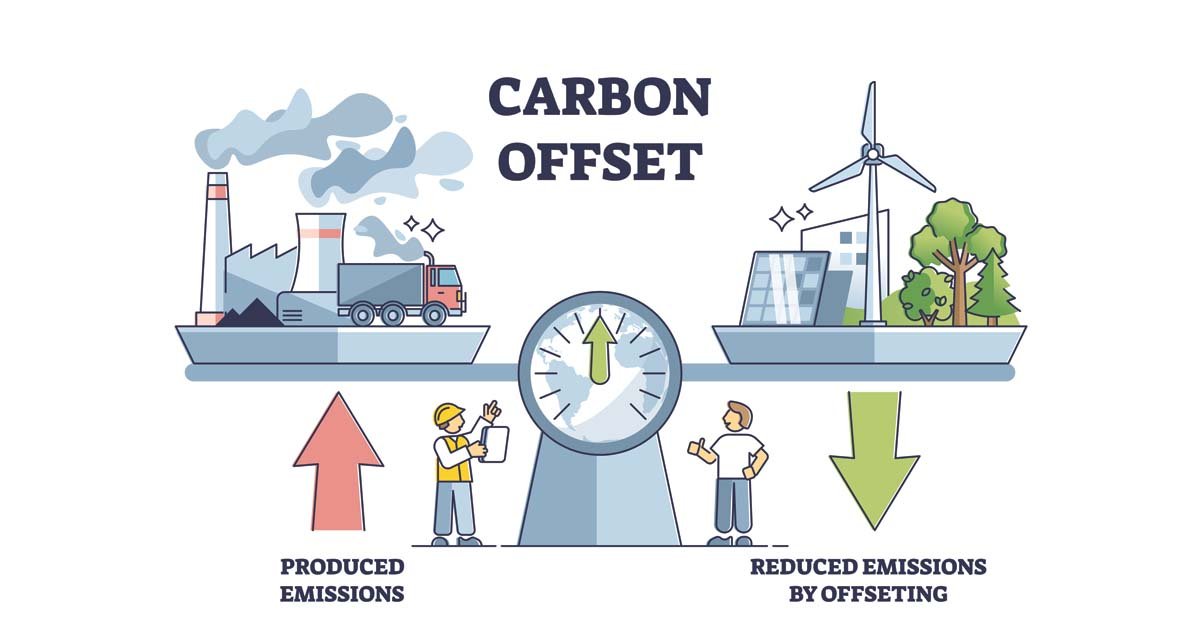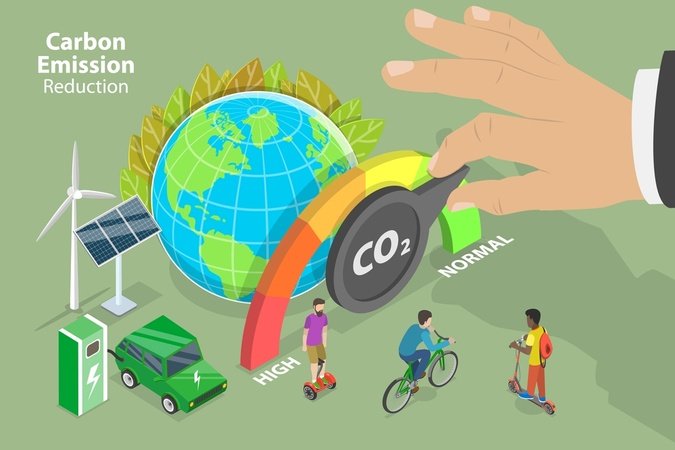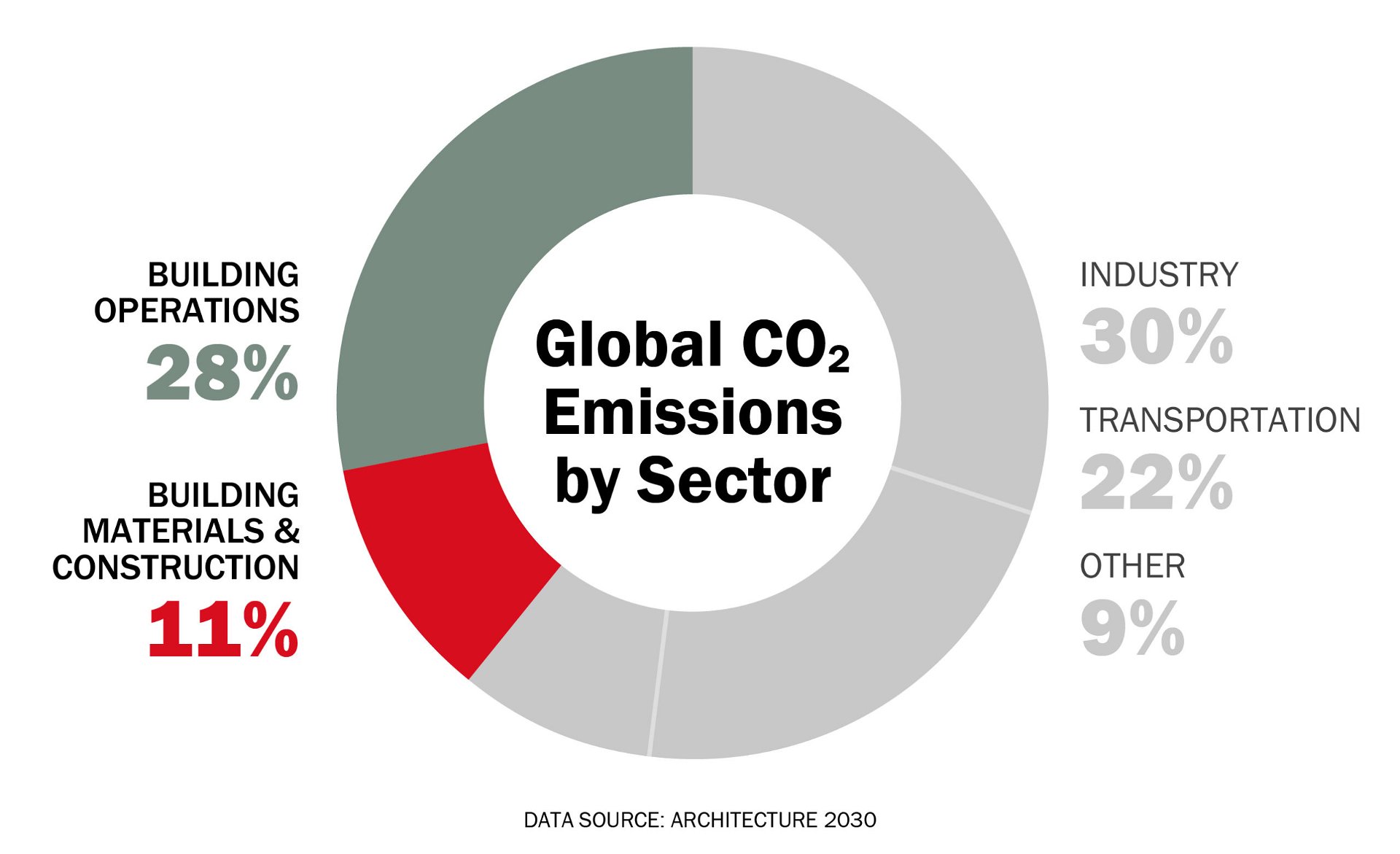With sustainability and ESG having taken center stage in today’s world, achieving carbon neutrality has become a critical goal for individuals, businesses, and governments across the globe. The quest to attain net zero carbon has now become more urgent, given the profound negative impacts of carbon emissions on our planet and everyday lives.
The global call for carbon neutrality arises from the alarming rise in carbon dioxide (CO2) emissions, primarily driven by the burning of fossil fuels, deforestation, and industrial processes.
According to the Global Carbon Atlas, in 2020, the world emitted approximately 34.7 gigatons of CO2, a staggering figure that continues to escalate. Imagine what could be the accurate data as of today, to the moment you are reading this!
Thus, carbon capture, carbon offset, and carbon reduction are three distinct strategies that the world has adopted to combat the negative impact of carbon emissions and to take steps towards net zero.
To understand these concepts better, let us first dive further to understand the need to attain carbon neutrality by taking a look at the impact of carbon emissions and the tri-fold strategy of carbon capture, carbon offset, and carbon reduction.
The Impact of Carbon Emissions
The negative impacts of carbon emissions are multifaceted and extend to every corner of our planet. Here are a few key areas where carbon emissions wreak havoc:
1) The Earth’s surface temperature has increased by 1.2°C since the late 19th century, causing global warming, extreme weather events, and wildfires, according to NASA.
2) Excess CO2 causing ocean acidification endangers marine life, including coral reefs and shellfish.
3) Biodiversity loss due to habitat destruction threatens many species, with a 68% decline in global wildlife populations since 1970, as per the World Wildlife Fund.
4) Poor air quality from carbon emissions leads to health problems, with WHO estimating 7 million premature deaths annually.
Now, let us understand the tri-fold strategy to combat the negative impact of carbon emissions:
Understanding Carbon Capture, Carbon Offset, and Carbon Reduction
Carbon Capture
Carbon capture is a technology-driven approach to reduce carbon emissions at their source. It involves capturing CO2 emissions from various sources such as industrial processes, power plants, refineries, waste-to-energy facilities, and even smaller-scale emissions from residential heating and transportation, etc before they are released into the atmosphere. According to the International Energy Agency (IEA), carbon capture and storage (CCS) can play a critical role in reducing emissions from energy-intensive industries.
The crux of carbon capture lies in preventing CO2 from entering the atmosphere, which helps reduce the overall carbon footprint of an operation or facility. However, carbon capture can be energy intensive.
Carbon Offset
Carbon offsetting refers to investing in projects or activities that reduce or eliminate an equivalent amount of carbon emissions elsewhere. These projects can include reforestation efforts, renewable energy initiatives, methane capture from landfills, and more.
Now, how is carbon offset brought into use?
Carbon offsetting is often used by individual entities, companies, and events to compensate for emissions that cannot be eliminated. It’s a valuable tool in the journey toward carbon neutrality.
Carbon Reduction
Also known as emissions reduction, carbon reduction, is the practice of directly reducing the amount of carbon emissions generated by an activity, process, or entity. This approach involves adopting environmentally conscious and more sustainable practices, improving energy efficiency, transitioning to renewable energy sources, and minimizing waste generation. The U.S. Environmental Protection Agency (EPA) reports that energy efficiency measures alone have the potential to reduce carbon emissions significantly.
Carbon reduction is the most effective way to attain carbon net neutrality. It addresses the root cause of the problem and works toward making the activity or operation inherently more sustainable. This strategy not only contributes to carbon neutrality but also helps to lower operational costs and enhance environmental stewardship.
Let, us now further distinguish these three concepts and gauge how each of these strategies differs. Let’s analyze this on the basis of various crucial factors:
Purpose
1) Carbon capture aims to prevent emissions at the source by capturing CO2 before it is released into the atmosphere.
2) Carbon offset aims to compensate for emissions by supporting projects that reduce emissions elsewhere.
3) Carbon reduction aims to directly reduce emissions by adopting cleaner and more sustainable practices.
Timing
1) Carbon capture occurs during or immediately after the emission process.
2) Carbon offset can be implemented at any time to balance past or future emissions.
3) Carbon reduction is a continuous effort to reduce emissions as much as possible in the long term.
Effectiveness
1) Carbon capture reduces emissions at the source but may not eliminate all emissions.
2) Carbon offset is effective at balancing emissions but does not reduce emissions directly.
3) Carbon reduction is the most effective method for reducing emissions at their source.
Sustainability
1) Carbon capture technologies can have environmental impacts and are not always sustainable.
2) Carbon offset projects, such as reforestation and renewable energy, can have positive sustainability outcomes.
3) Carbon reduction inherently promotes sustainability by reducing emissions and improving practices.
Application
1) Carbon capture primarily is suitable for large-scale, industrial sources of emissions such as power plants and heavy manufacturing facilities.
2) Carbon offset can be applied to a wide range of emissions sources, from individual carbon footprints to larger industrial operations.
3) Carbon reduction is applicable to all emission sources, from individual lifestyle choices to large-scale industrial and energy systems.
Operational Efficiency
1) Carbon capture can be energy-intensive and may have lower operational efficiency due to the complexity of capture and storage technologies.
2) Carbon capture offers relatively higher operational efficiency since it involves investing in existing, proven projects that efficiently reduce emissions.
3) Carbon reduction, through sustainable practices and technologies, often results in significant operational efficiency improvements, leading to reduced resource consumption and costs.
To achieve true carbon neutrality, a combination of these approaches is often necessary. Carbon reduction should be the primary focus, while carbon capture and offsetting can help bridge the gap between current emissions and a more sustainable, carbon-neutral future. By understanding these concepts and embracing them in our daily lives, we can collectively strive for a more sustainable and environmentally responsible world, supported by data that underscores the urgency of our actions and the potential for meaningful change.

